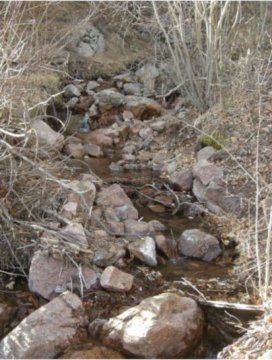[ad_1]
Steps and pools are among the most stable and functionally important features in the mountain river landscape. Their stability is important for dissipating stream energy, withstanding ordinary floods and resisting erosion, and regulating the flow and sediment dynamics feeding into lowland areas. Clasts comprising steps also offer habitats for sensitive and specialized organisms. The integrity of step-pool systems is therefore important in maintaining healthy ecosystems, as well as in keeping water and sediment hazards in check for human communities downstream.
Yet, step-pool systems are increasingly vulnerable to a range of disturbances, whose impacts are not well understood. Besides direct encroachment in response to population pressures, step-pool streams are increasingly subjected to larger and more frequent climatic events, such as big floods, drought, and wildfire. The impacts of these extreme events are difficult to observe, raising questions like: How do they affect the integrity and health of step-pool systems? How resilient are step-pool streams to changing environments? How well do they recover once disturbed? Answers to these questions are critical for anticipating future landscape change, mitigating potential hazards for nearby residents, and promoting sustainable river ecosystems for future generations.
In June 2012, the Waldo Canyon Fire that burned a portion of Pike National Forest in Colorado gave a research team opportunity to investigate these questions in a comprehensive study.
Comprising geomorphologists, aquatic ecologists, environmental scientists, and civil engineers, this interdisciplinary team collected field data over three years after the fire in seven step-pool channels burned by a range of severity. They documented topographic changes with ground surveys, quantified erosion and deposition with light detection and ranging (LiDAR) terrestrial laser scanning, and assessed ecological conditions by sampling benthic organisms. They compared how these burned step-pool streams changed following post-fire storms with three reference channels outside the burn area.
The researchers found that the severity of burn, together with the intensity of rainfall, dictated the interacting geomorphic and ecological impacts after fire. Whereas step-pools remained stable in unburned and low-severity burned channels even through the largest storms — with recurrence intervals up to 1000 years — the smallest rainfall of the garden variety destabilized step-pool sequences in a severely burned channel. The stability and destruction of step-pool units, in turn, affected the habitats present and the types of benthic organisms able to colonize after fire.
These findings suggest a multitude of possible responses for the post-fire management of step-pool mountain streams — from “leave alone” where burned with low severity to a possible focus on warning systems downstream of severely burned areas, to active channel management in moderately burned areas, where improvement in the integrity of step-pool systems could make a difference. Because wildfires are growing in frequency and magnitude under warming climates, these lessons and guidance for management become increasingly important.
Story Source:
Materials provided by Geological Society of America. Note: Content may be edited for style and length.
[ad_2]















